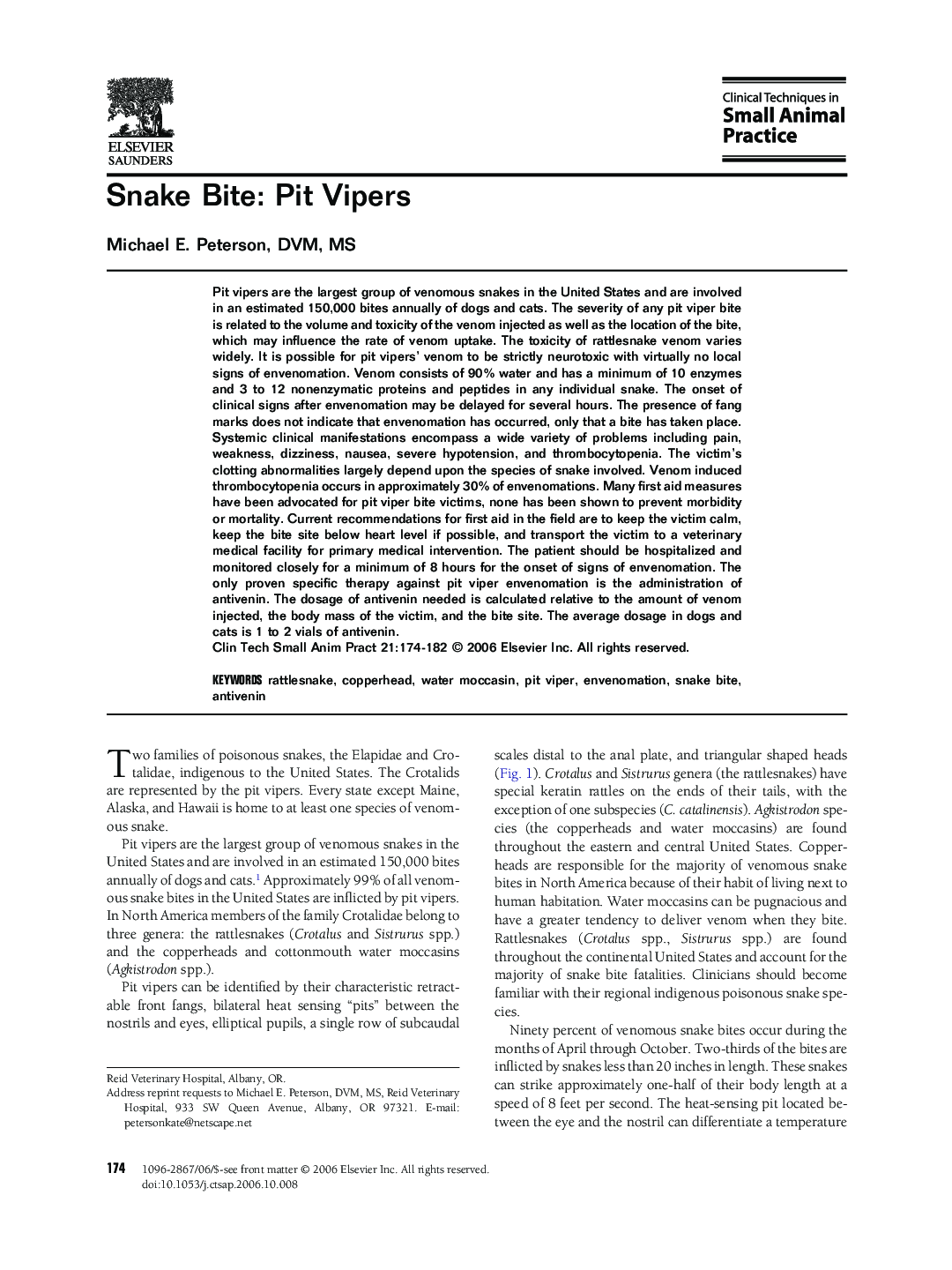| کد مقاله | کد نشریه | سال انتشار | مقاله انگلیسی | نسخه تمام متن |
|---|---|---|---|---|
| 2393344 | 1551484 | 2006 | 9 صفحه PDF | دانلود رایگان |

Pit vipers are the largest group of venomous snakes in the United States and are involved in an estimated 150,000 bites annually of dogs and cats. The severity of any pit viper bite is related to the volume and toxicity of the venom injected as well as the location of the bite, which may influence the rate of venom uptake. The toxicity of rattlesnake venom varies widely. It is possible for pit vipers’ venom to be strictly neurotoxic with virtually no local signs of envenomation. Venom consists of 90% water and has a minimum of 10 enzymes and 3 to 12 nonenzymatic proteins and peptides in any individual snake. The onset of clinical signs after envenomation may be delayed for several hours. The presence of fang marks does not indicate that envenomation has occurred, only that a bite has taken place. Systemic clinical manifestations encompass a wide variety of problems including pain, weakness, dizziness, nausea, severe hypotension, and thrombocytopenia. The victim’s clotting abnormalities largely depend upon the species of snake involved. Venom induced thrombocytopenia occurs in approximately 30% of envenomations. Many first aid measures have been advocated for pit viper bite victims, none has been shown to prevent morbidity or mortality. Current recommendations for first aid in the field are to keep the victim calm, keep the bite site below heart level if possible, and transport the victim to a veterinary medical facility for primary medical intervention. The patient should be hospitalized and monitored closely for a minimum of 8 hours for the onset of signs of envenomation. The only proven specific therapy against pit viper envenomation is the administration of antivenin. The dosage of antivenin needed is calculated relative to the amount of venom injected, the body mass of the victim, and the bite site. The average dosage in dogs and cats is 1 to 2 vials of antivenin.
Journal: Clinical Techniques in Small Animal Practice - Volume 21, Issue 4, November 2006, Pages 174–182